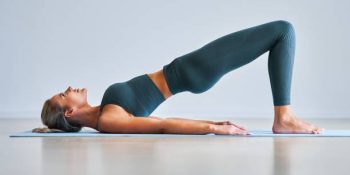
Exercise in Stroke Rehabilitation!
March 10, 2023
Strokes occur when blood supply to your brain is stopped. This can be temporary and resolve itself which is called a ‘transient ischaemic attack’ or TIA or more serious and require fast medical attention which can be an ischaemic stroke or hemorrhagic stroke.
Ischaemic Stroke: A blockage in an artery which restricts blood from travelling and supplying our brains with oxygenated blood.
Haemorrhaging Stroke: Bursting of a blood vessel which disrupts blood flow and causes bleeding into the brain.
Various conditions, such as cardiovascular and metabolic disease, along with family history can elevate the risk of an individual having a stroke. It is important to also address these factors in order to reduce the risk of stroke. But there are also a massive amount of risk factors under our control! These include physical activity and reducing sedentary time, healthy eating and good quality sleep and a low stress lifestyle!
In addition to the neurological deficits of stroke such as fatigue, individuals who’ve had a stroke also often experience physical and functional problems which can be really harmful to quality of life, employment and everyday living. Common physical limitations include changes in walking ability as well as arms and legs that don’t want to respond to our brain’s thoughts! Intro to exercise as the leading rehabilitation tool in regaining function, power over your body as well as quality of life!
The benefits of exercise:
Resistance training: Increasing overall muscular strength, particularly in the stroke affected limbs is vital in making sure that individuals are maintaining an adequate level of muscle mass, which will ultimately assist them to complete tasks with a lot more ease. In addition, it is also important to be consistent in gaining muscular strength, in particular when it comes to training stroke affected limbs. You either use it or you lose it!
Ballistic Gait training: This can be classified as fast and rapid movements which target muscle groups that are used during our gait cycle (otherwise known as our walking cycle). In addition, this also includes participating in regular walking at various paces which aims to improve an individual’s walking after having a stroke. Since this is an activity that is used in everyday life, it is critical to implement an appropriate level of gait training into your programs.
Aerobic training: Various of modes of aerobic (cardio) training, including walking and jogging, leg and arm cycling, and swimming can not only assist in implementing strength and gait training, but will also improve overall heart health. Considering that common risk factors for stroke include various heart diseases, it is quite important to be implementing exercises with the intention of elevating your heart rate and working up a bit of a sweat!
If you, or somebody that you know, has had a stroke and would like to get started on their health journey, come in and have a chat with one of our exercise physiologists so that we can provide you with the correct tools and advice to make it happen!
Other News
Why Runners should do Pilates
Why runners should do Pilates? Simple, it will make you a better run...
June 23, 2023
Managing POTS through exercise
Struggling with exercise since being diagnosed with POTS? This one’s for ...
April 24, 2023
Exercise in Stroke Rehabilitation!
Strokes occur when blood supply to your brain is stopped. This can be tempo...
March 10, 2023







